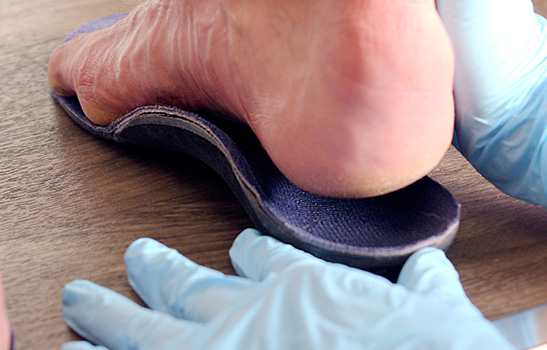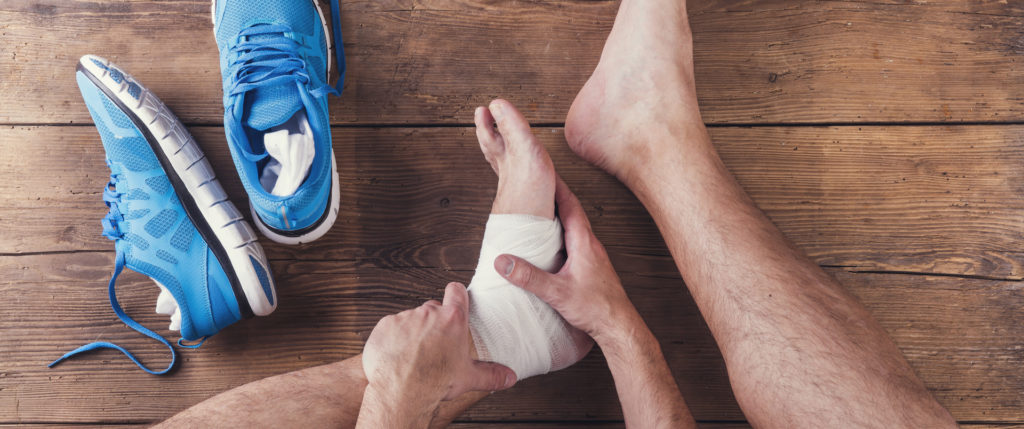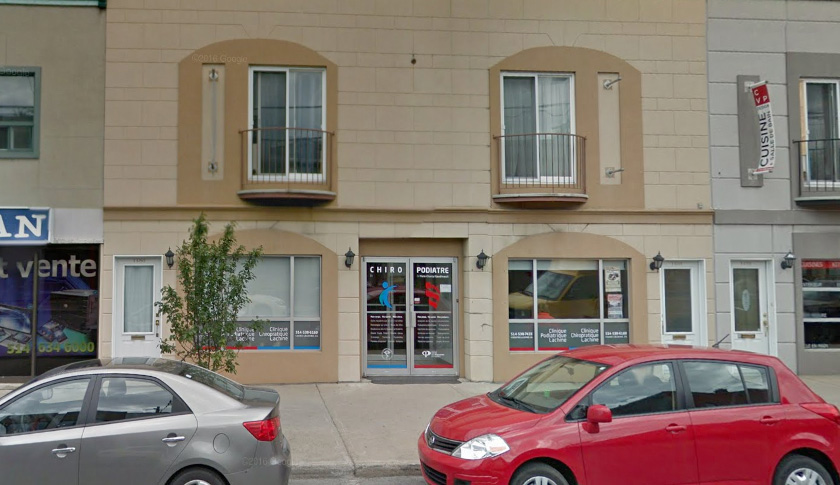Morton’s neuroma
Also known as: Plantar neuroma, metatarsalgia
Morton’s neuroma is when a nerve at the base of two toes becomes inflammed, causing pain, burning and sometimes numbness in the toes. This happens most often between the third and fourth toes. Pain is noticeable when you walk or do other physical activities. It can be aggravated by closed or narrow shoes.
See the causes See the long term complications See how to relieve yourself at home
Signs and symptoms of Morton’s neuroma
There are several symptoms of Morton’s neuroma:
- Tingling in one or several adjacent toes
- Cramps or spasms in the toe or foot
- Pain and burning sensation in toes/base of toes
- Pain that spreads to the top of the foot
- Tingling or shocks in the toes
- It feels like you are walking on a bump or a fold in your sock
- Clicking sensation between the toes
- Urgent need to remove your shoe and massage the area
- Toes deviating in opposite directions
- Symptoms aggravated when you wear closed or narrow shoes
What are the causes of Morton’s neuroma
Morton’s neuroma is usually caused by too much pressure or friction on a nerve located between two metatarsal bones (the bones at the base of each toe). Repeated stress causes the nerve to protect itself with fibrous scar tissue that makes it thicker. This creates a vicious cycle. The thicker the nerve becomes, the more room it takes up between the bones. This causes additional irritation and a worsening of symptoms.
Occasionally, Morton’s neuroma can be caused by an injury, engaging in intense sports, spraining your foot, etc.
What causes excess stress on the intermetatarsal nerve?
Poor foot mechanics:
- Falling arches (hyperpronation) and flat feet
- Hypermobility of foot joints and loose ligaments
- Improper foot propulsion causing stress on the front of the foot
- Poor distribution of pressure on foot
- Leg-length discrepancy
- High arches
- Hammertoes
- Inflexible ankle or calf
- Bunions
- Osteoarthritis of the big toe
- 1st metatarsal bone is too short/long
- Poor running technique
Improper footwear or foot position:
- High-heeled shoes
- Narrow or pointy shoes
- Poorly fitting skates/ski boots/cycling shoes
- Improper position when working (such as hyperextended toes when crouching)
Progression and consequences of a plantar neuroma
Initially, Morton’s neuroma just causes occasional symptoms, often when you wear narrow shoes or engage in sustained activity.
If the problem isn’t addressed quickly, the nerve will get thicker and the symptoms wil get worse. You might start to feel like you’re walking on a bump or your foot is clicking, even when you’re barefoot. Pain can get worse and spread to the arch or top of your foot.
Eventually, your nerve can so affected that you lose sensation between the affected toes. Some people experience permanent numbness in their toes. If the mass around the nerve gets too big, it can cause your toes to become crooked or spread apart.
Morton’s neuroma can cause inflammation of the natural cushion (bursa) between your metatarsal bones, leading to intermetatarsal bursitis. In addition, pain can lead to an unconscious change in gait, which can trigger symptoms elsewhere in your foot or in your leg, knee or back. The other foot may also develop problems as a result of compensating.
How to relieve Morton’s neuroma at home
1. Changing your shoes :
- Makes sure shoes are wide enough in front
- Avoid high heels
- Ensure skates, ski boots and cycling shoes fit properly
- Avoid tight shoe straps across the front of the foot
2. Managing the inflammation :
- Apply ice: use a frozen water bottle to massage the bottom of your foot for 10 to 15 minutes
3. Massage :
- Massage the painful area by rolling a golf ball under your foot
- Pay special attention to tight areas
How to diagnostic Morton’s neuroma
- Your podiatrist will perform a complete assessment and palpate your foot. Then, a thorough biomechanical exam is needed to gain a better understanding of your foot mechanics and find out what’s irritating your nerve.
- X-rays can be helpful in ruling out other conditions, determining whether there are calcium deposits and checking the condition of your bones and joints. X-rays are also used to verify the length and alignment of your metatarsal bones.
- Ultrasound is an excellent imaging technique used to diagnose foot neuroma. We can use ultrasound to measure the size and severity of the neuroma, and to observe surrounding tissues to rule out other conditions. Patients can often have both a neuroma and a bursitis altogether.
What can my podiatrist do about Morton’s neuroma?
Once the problem has been diagnosed and its potential causes identified, your podiatrist will be able to recommend a personalized treatment plan.
The most common treatments are:
1. Ultrasound-guided cortisone injections :
Morton’s neuroma occurs when there is inflammation around your nerve. Cortisone is an anti-inflammatory that is injected directly into the neuroma. We use ultrasound to make sure the injection goes to the right spot.
2. Prescription medication :
Painkillers and/or anti-inflammatory drugs are sometimes prescribed.
3. Plantar orthotics :
Plantar orthotics are needed if the condition is caused by poor foot mechanics. By ensuring that pressure is evenly distributed throughout the foot, orthotics reduce excess movement and can compensate for poorly aligned bones in your feet. A special correction is often included between the affected toes to provide additional space for the compressed nerve.
4. Physical therapy :
- Manipulative therapy can help release the muscles and structures around the nerve.
- Cryotherapy and ultrasound treatments are used to treat inflammation.
- Taping and splints can temporarily stabilize the foot bones and promote healing.
5. Radial shockwave therapy :
Used in chronic cases where patients fail to respond to other treatments, this therapy uses the body’s natural capacities to restart the healing cycle. It reactivates the body’s natural inflammation process to trigger healing and reduce pain. Learn more about the radial shockwave therapy.
6. Surgery :
If more conservative treatments aren’t successful, the nerve and surrounding scar tissue may need to be surgically removed.
How to prevent Morton’s neuroma?
- Wear appropriate footwear and replace them as needed
- Have your feet measured at the store to determine the right size in the given footwear brand
- Ask for assistance when purchasing sports gear
- Get your shoes and sports equipment specially adjusted by a professional if they are uncomfortable (have the tight portions of shoes stretched, have ski boots heated, etc.)
- Avoid repetitive foot strain at work (such as hyperextended toes when crouching)
- Wear your prescribed orthotics
Only women get Morton’s neuroma because they wear high-heeled shoes!

High-heeled shoes are often an aggravating factor for Morton’s neuroma, but most cases occur in patients with falling arches (hyperprontation) and flat feet. That means that men can get it too!
What if it’s not foot neuroma?
Other conditions can cause similar symptoms as foot neuroma:
- Intermetatarsal bursitis
- Osteoarthritis of a joint at the base of the toes
- Hammertoes
- Inflammatory arthritis (rheumatoid arthritis, psoriatic, etc.)
- Tendinitis or tenosynovitis of the flexor tendons or interosseous muscles
- Tendon rupture
- Capsulitis of metatarsophalangeal joints
- Inflammation or rupture of the plantar plate
- Calcium deposits or extra bone
- Stress fracture of a metatarsal bone
- Synovial cyst
- Plantar fibroma
- Nerve compression (tarsal tunnel, lumbar root, etc.)
- Tumor


